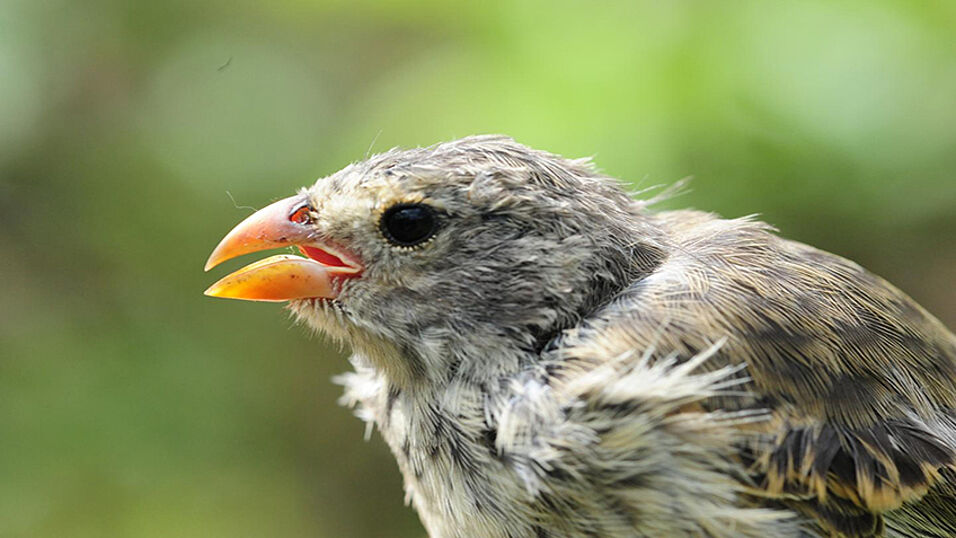The main reason for this is a parasite called Philornis downsi: The fly was introduced in the 1960s - probably from the South American mainland or Trinidad - and kills so many young birds that ecologists have trouble finding nests with live chicks.
The P. downsi larvae feed on the blood and tissue of developing finches, causing on average approximately 55% in-nest mortality and enlarged naris size in survivors. Here we test if enlarged naris size is associated with song characteristics and vocal deviation in the small tree finch (Camarhynchus parvulus), the critically endangered medium tree finch (C. pauper) and the recently observed hybrid tree finch group (Camarhynchus hybrids). Male C. parvulus and C. pauper with enlarged naris size produced song with lower maximum frequency and greater vocal deviation, but there was no significant association in hybrids. Less vocal deviation predicted faster pairing success in both parental species. Finally, C. pauper males with normal naris size produced species-specific song, but male C. pauper with enlarged naris size had song that was indistinguishable from other tree finches. When parasites disrupt host mating signal, they may also facilitate hybridization. Here we show how parasite-induced naris enlargement affects vocal quality, resulting in blurred species mating signals.
Introduced parasite changes host phenotype, mating signal and hybridization risk: Philornis downsi effects on Darwin's finch song: Sonia Kleindorfer, Georgina Custance, Katharina J. Peters and Frank J. Sulloway. In Proceedingy of the Royal Society B, https://doi.org/10.1098/rspb.2019.0461

